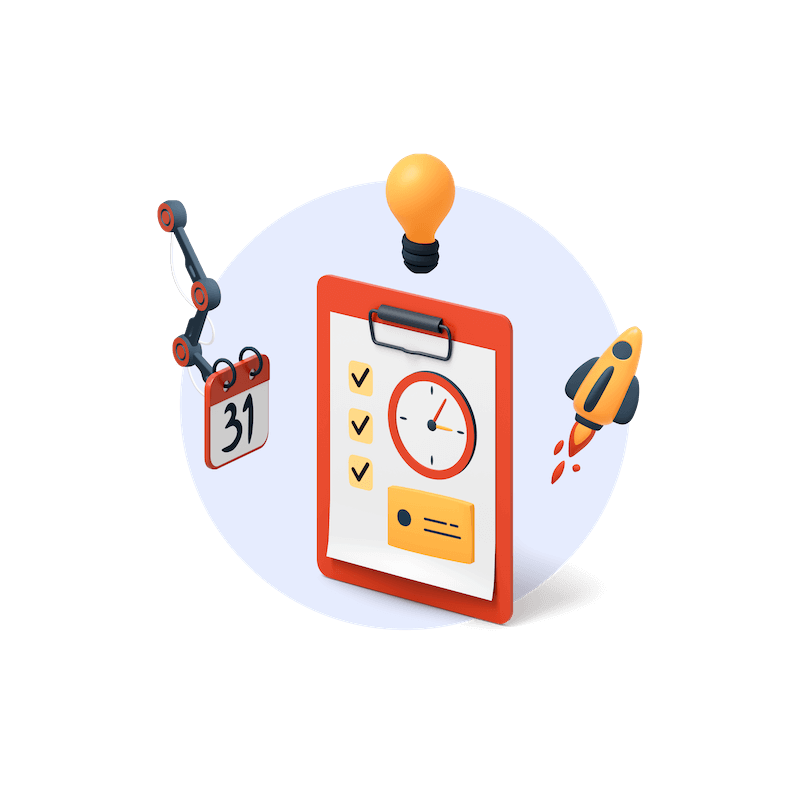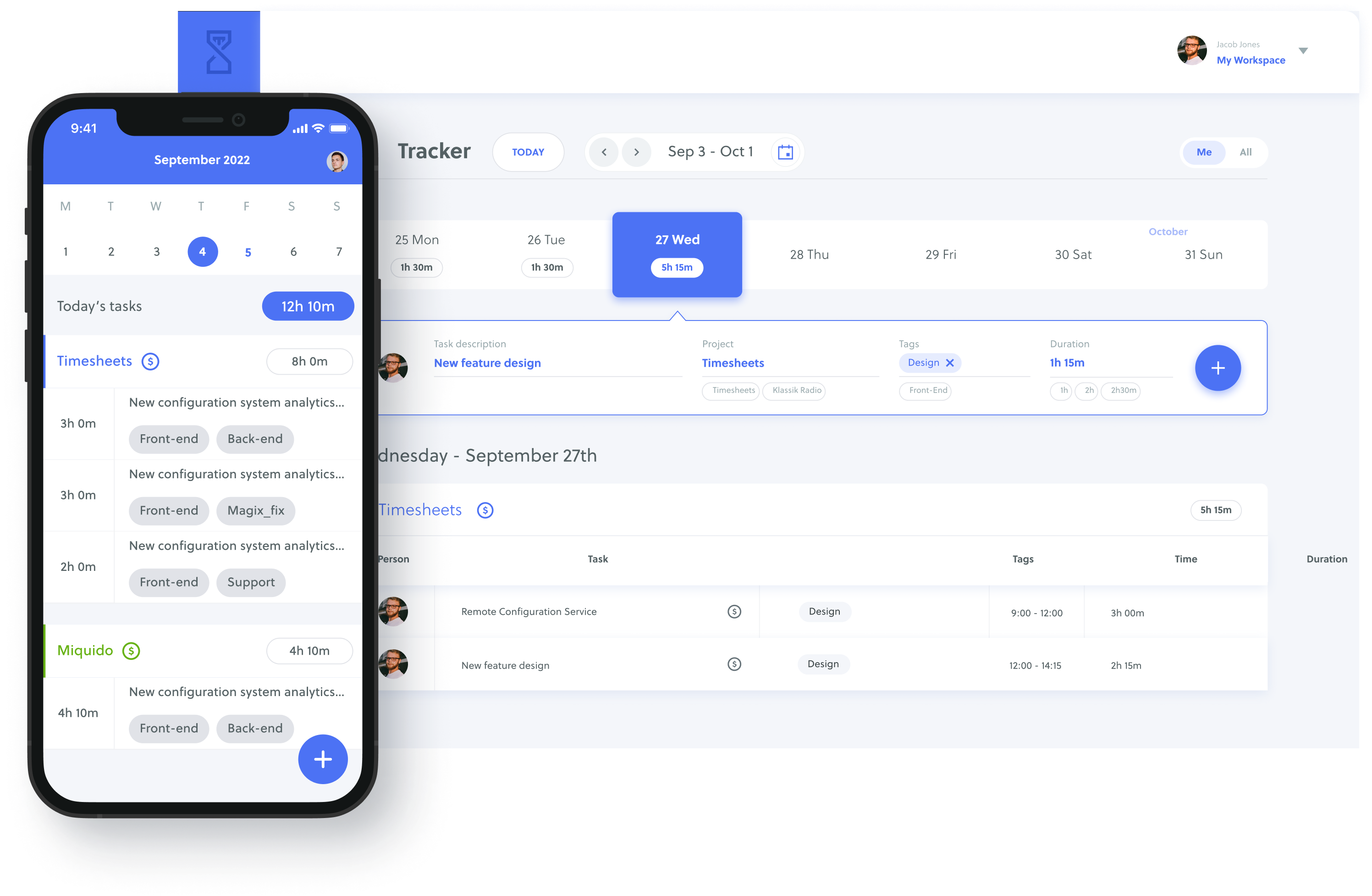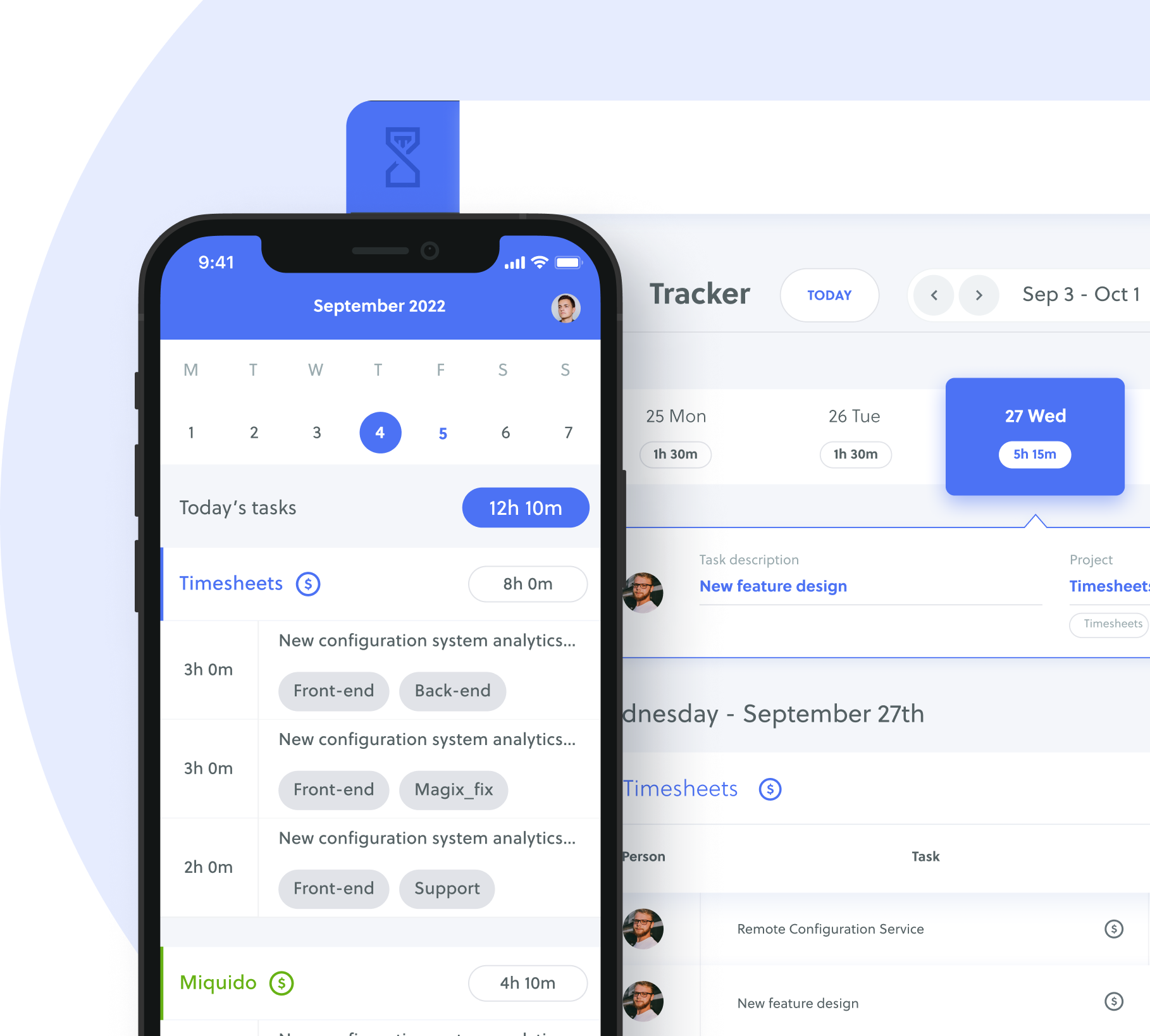Most people want to be more productive but don’t know how. Whether you’re spreading yourself too thin or can’t seem to prioritize what needs to get done, it’s clear that there’s one common denominator: a lack of structure in the way you do things.
If you’re nodding your head in agreement, then the 1-3-5 rule might be just what you need. This simple yet effective productivity method can help you get more done in less time.
At Quidlo, we’re going to tell you everything you need to know about implementing the 1-3-5 rule into your life.
Ready? Let’s go.
Table of Contents
What is the 1-3-5 Rule?
The 1-3-5 productivity rule is a straightforward productivity hack that helps define your daily to-do lists: each day, choose one big task, three medium tasks, and five small tasks to complete.
It’s a popular time and task management method for many successful professionals – in fact, it’s something that Betty Liu, the executive vice chairman of the New York Stock Exchange uses every day.
- For the major task, pick something you really want or need to get done (urgent tasks). This one task could be something like launching a new website, creating a budget, or doing research for larger projects.
- The three medium tasks should not be as time-consuming. Examples might include writing the first draft of a blog post, researching potential budget options, or collecting customer feedback on the upcoming project.
- The five minor tasks are things you can take care of quickly and easily. These could be things like creating a spreadsheet for your budget, taking personal calls, or reaching out to customers for feedback.
It’s important to note that productivity hacks like the 1-3-5 rule don’t need to take up an entire day. You can break up all those other tasks into manageable chunks and spread them out over a few days or even weeks – whatever works best for you.
Benefits of 1-3-5 Rule: Why you should incorporate it in your lifestyle
- You procrastinate less. Because the 1-3-5 rule provides a clearly-defined structure by breaking down tasks into manageable, actionable items, it can reduce your stress or anxiety about an upcoming project. Research has shown that anxiety and procrastination is closely linked. So with a plan, you’re more likely to start working instead of procrastinating.
👉 Related: How to Beat Procrastination: 7 Actionable Tips
- You prioritize better. Did you know the average worker spends more than half their day on unnecessary tasks? With the 1-3-5 rule, you can easily identify which tasks are most important and need to be done first. This helps you avoid wasting time on low-priority tasks while still getting the important stuff done. But the beauty of the technique is that it also doesn’t fully close the door on low-priority tasks; there’s still room for them if you have time at the end of the day.
- You have a better work-life balance. The 1-3-5 rule provides a structure for your day without overloading you with tasks. This allows you to better manage your time, leaving more room for leisure activities or family time.
How to apply the 1-3-5 rule: Step-by-step, pro tips + example
Using the 1-3-5 technique can help you get started on something you’ve been meaning to do for a long time. Breaking your tasks into smaller parts will help you to use your time more efficiently and feel more productive, even when you have accomplished small victories.
Jot down all your tasks for the week
At the beginning of each week, say, Sunday evening, make a list of all the tasks you want to get done. This could include home errands, work projects, and personal goals – they can also be tasks that you have left over from last week.
People often have their heads stuck too deep in the weeds, not seeing the bigger picture or making connections between tasks. By taking a step back and looking at all your goals holistically, you can see which ones are more important than others.
Some pro tips to help you with listing all your tasks
- Try to make them concrete and actionable. At its core, your weekly tasks aren’t very different from the KPIs you might set at your company. A well-defined task shows progress toward an end goal in an objective and clear way. It tracks efficiency, quality, timeliness, and performance. For example, instead of writing “Client X deliverables,” you could write “Research and outline 4 client briefs for Client X.”
👉 Related: How to set SMART Goals at Work
- Let all your tasks bleed out on paper. Don’t think too much about what’s going on in that paper at first. Be comfortable with getting things out of your brain at this stage, whether that means jotting down bullet points or writing complete sentences.
- Keep a separate list of tasks for this week versus next week. Naturally, you may have new tasks pop out throughout the week. Unless they’re super urgent, just add them to your list for the following week as soon as they come to mind. This way you can stay true to your 1-3-5 plan without getting overwhelmed.
Rank them into Small, Medium, and Big Tasks
Now that you have your list, it’s time to distinguish which ones are small, medium, and big tasks. You can do this by assigning a numerical value (1, 3, and 5) for each task.
As a general rule of thumb, you’ll find that
- Major tasks should take about 3-4 hours.
- Medium tasks should take 1-2 hours.
- And a small task should take less than 30 minutes to an hour, each.
Of course, these numbers can vary depending on your industry and the nature of the project. That’s why a time-tracking tool can come in handy to get a more relevant and accurate overview of how your time is being spent across tasks.
It’s also important to remember that the longer time it takes for a task isn’t always congruent with what’s most important or urgent. So you will need to judge your priorities accordingly. You might also find that while some tasks take longer, the effort and processes required for them aren’t that difficult – so you can afford to give those tasks a lower value on your list.
Some pro tips to help you with grouping tasks
- Don’t become obsessed with ranking your tasks. While it’s important to be able to recognize which tasks are more important and need your attention asap, it’s also good practice to not get too wrapped up in the details. You can always change it later.
- Try to group similar tasks together, so you can finish them all at once in one focused go. This will help keep the momentum going when you’re working on them. But more on this later.
- Pay attention to the time spent on similar tasks and projects to better allocate your time. Again, a time-tracking app is highly recommended because it will allow you to accurately gauge how much time individual tasks are taking you and give you a better idea of how to rank them. You can use these observations as a reference for your next task-setting date.
👉 Related: 5 Tips on How to Introduce Time Tracking Solution to Your Team
- Take a look at your small tasks – do they have to be done by you? No? Then consider deligating them or automating them. This way you can focus more on the big tasks that will have a bigger impact on you and your in-person or remote team.
Time to write your to-do list
OK. Now that you’ve written down all your tasks for the week and categorized them by size, it’s time to make a daily to-do list so you have an action plan for each day of the week.
Start by breaking down your list of tasks into 1, 3, and 5 items for each day. You can either do this on a notepad or use an online tool (stick around for the tutorial in the next section).
Don’t try and squish everything in one day. If you have 10 small tasks (1 hour each) for the entire week, you should break them up into a couple of days so that it would look something like this:
- Monday – 4 small tasks
- Tuesday – 3 small tasks
- Wednesday – 3 small tasks
Some pro tips to help you with creating your to-do list
- Make sure to give yourself some breathing room and plan for downtime. Working non-stop without taking breaks can lead to burnout, so make sure to squeeze in a few minutes of rest or recreation every day.
- Write down only the tasks that you absolutely need to complete in one day. Be realistic with your estimations and expectations. This will help you avoid feeling overwhelmed and will also give you a sense of accomplishment when everything on your list is checked off. It’s better to underpromise and overdeliver than the other way around.
- Try not to add any additional tasks during the day, as this can lead to distraction from other important tasks. Also, try to only check your to-do list once or twice throughout the day.
- Don’t forget to have fun and reward yourself when you complete a task – it’ll help motivate you!
See it in action: 1-3-5 rule example
1 big thing: Launch a new website
3 medium things
- Fix bugs in application
- Conduct keyword research for SEO content strategy
- Have an onboarding call with Rachel
5 small things
- Buy groceries on the way home
- Pick up the kids from school
- Reply to work emails
- Schedule a meeting with Jeff
- Return Amazon package
🚨 Pro tip: An effective way to implement and stay on top of your 1-3-5 rule is by using an online 1-3-5 rule tool that lets you list your daily tasks, like 135list.com. But a bonus is also being able to track your time spent on big projects (or if you’re old-fashioned, a notepad and timer will do).
Quidlo, for example, is an online time-tracking tool that lets you and your team easily create tasks, track time spent on those tasks, and even monitor your productivity.
To give you a quick run-through, we started by simply creating a project and labeling it.
Let’s call the project: “Monday’s 1-3-5.”
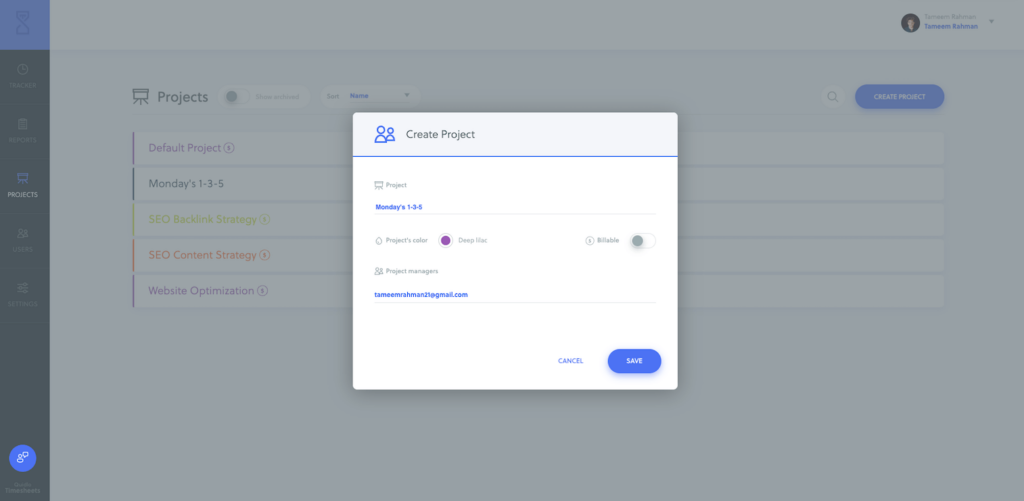
Then in the projects tab, you can add global tags to label your tasks by size and importance. This will make it easier to filter your time report results after you finish tracking all your tasks. For the sake of this example, we just used “1,” “3,” and “5.”
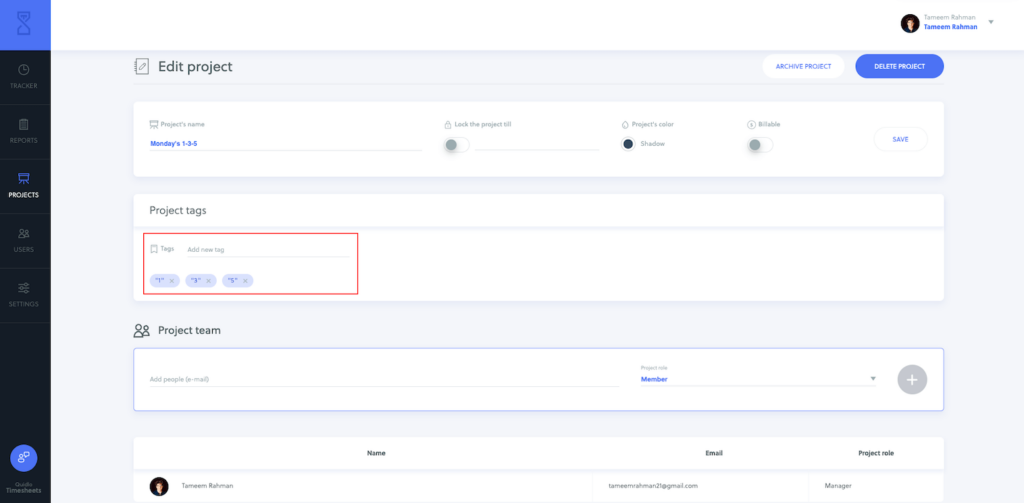
From there, head on over to the tracker tab and add your first task. Start by naming the task, put it under the appropriate project name (“Monday’s 1-3-5”), add the tag (based on importance, so you’d start with “1”), and start time-tracking. Bada bing, bada boom.
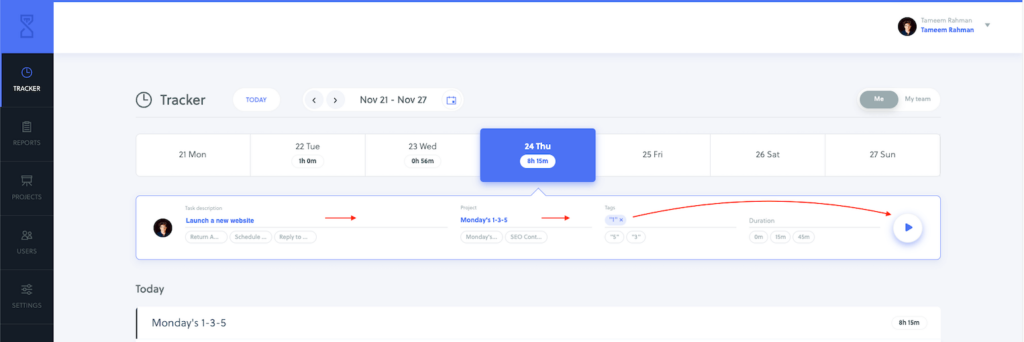
Repeat for all intended tasks. Eventually, your dashboard will look something like this:
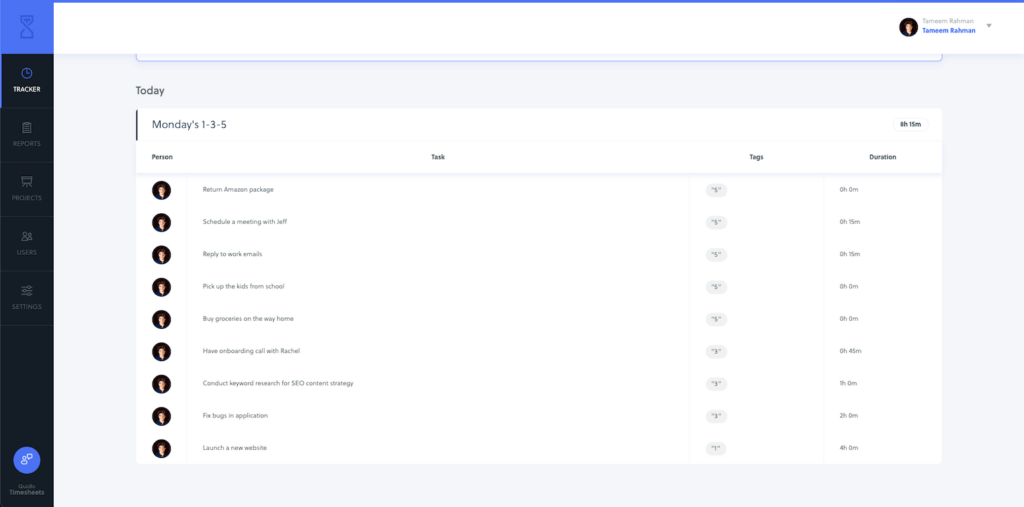
By the way, remember when we said it’s a good idea to group similar tasks together to keep the momentum going? You can create a sub-project and add all related tasks under one roof to stay organized and better understand how much time they take you.

How to make sure you’re getting everything done on your 1-3-5 to-do list
So you’ve learned how to set up the 1-3-5 rule and how to write your to-do list. But how do you make sure that everything is actually getting done?
Because if you’re falling behind on your promise to complete the tasks from day one, your backlog will add up fast and the next thing you know, the 1-3-5 rule will have just been an added pressure on your already busy work schedule.
- Eat the frog. If you’re struggling to decide which task you should start with, start with the task that you find most difficult and/or important. This will help you stay motivated as you won’t be distracted by smaller tasks while working on the big ones, plus it’ll also give you a sense of accomplishment when they’re completed.
- Get in the deep work zone. Try to minimize distractions and focus on the task at hand. This can be done in a variety of ways, such as closing unnecessary tabs, turning off notifications (or putting your phone away), and setting up a workspace environment that won’t distract you. The idea is to create an environment where you can focus solely on the task at hand. You’re essentially priming your brain to be productive and work with efficiency.
- But avoid burnout with the Pomodoro method. To help you stay energized and avoid burnout, try the Pomodoro technique – set a timer for 25 minutes (or whatever amount of time works best for you) and focus solely on your task. When the timer rings, take a 5-minute break to relax. This will help keep your brain fresh while also ensuring that you’re not working too hard for too long.
- Track your overall time spent on tasks. Look, we said it once and we’ll say it again: you can list and categorize all the tasks you want on a regular basis, but if you’re not making reasonable time allotments, you’re still going to struggle to get your work done. That’s why it’s important to track the time spent on each task so that you can make better time estimates and thereby optimize your workflow and make sure that you’re allocating enough time for the tasks.
Over time, Quidlo will arm you with custom reports across your projects and related tasks so you get a clear overview of how much time you (or other colleagues) spent. Remember that by using the filters, you can sort your daily tasks by importance too (the “1”, “3”, and “5” tags we mentioned in the example). This way, you can easily identify ways that you can optimize your workflow and boost productivity with the 1-3-5 rule.
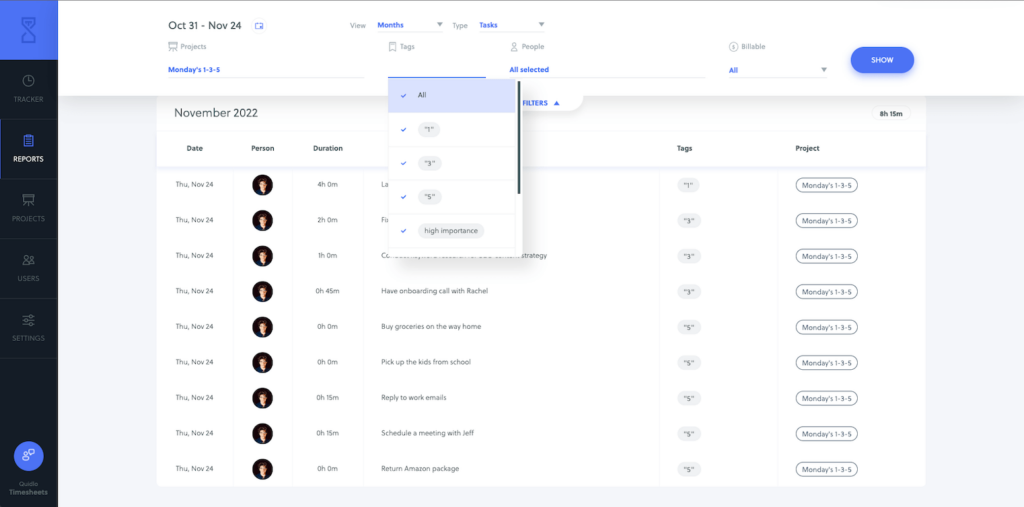
Ready? Set. Go. Use the 1-3-5 rule with Quidlo.
The 1-3-5 rule is a great way to help you stay organized and focused on your work. By following the tips we’ve provided, you’ll be able to make sure that everything on your list gets done and that you’re not struggling under the pressure of an overwhelming workload.
And by tracking your time spent on tasks, you can begin to optimize your workflow so that you’re getting more done in less time. With Quidlo, making a productive to-do list is easy and straightforward – all while providing custom reports across projects so you always have a clear overview of what needs to get done.
So the next time you’re feeling overwhelmed and don’t know what to do next – try out the 1-3-5 rule and Quidlo for free while you’re at it.


